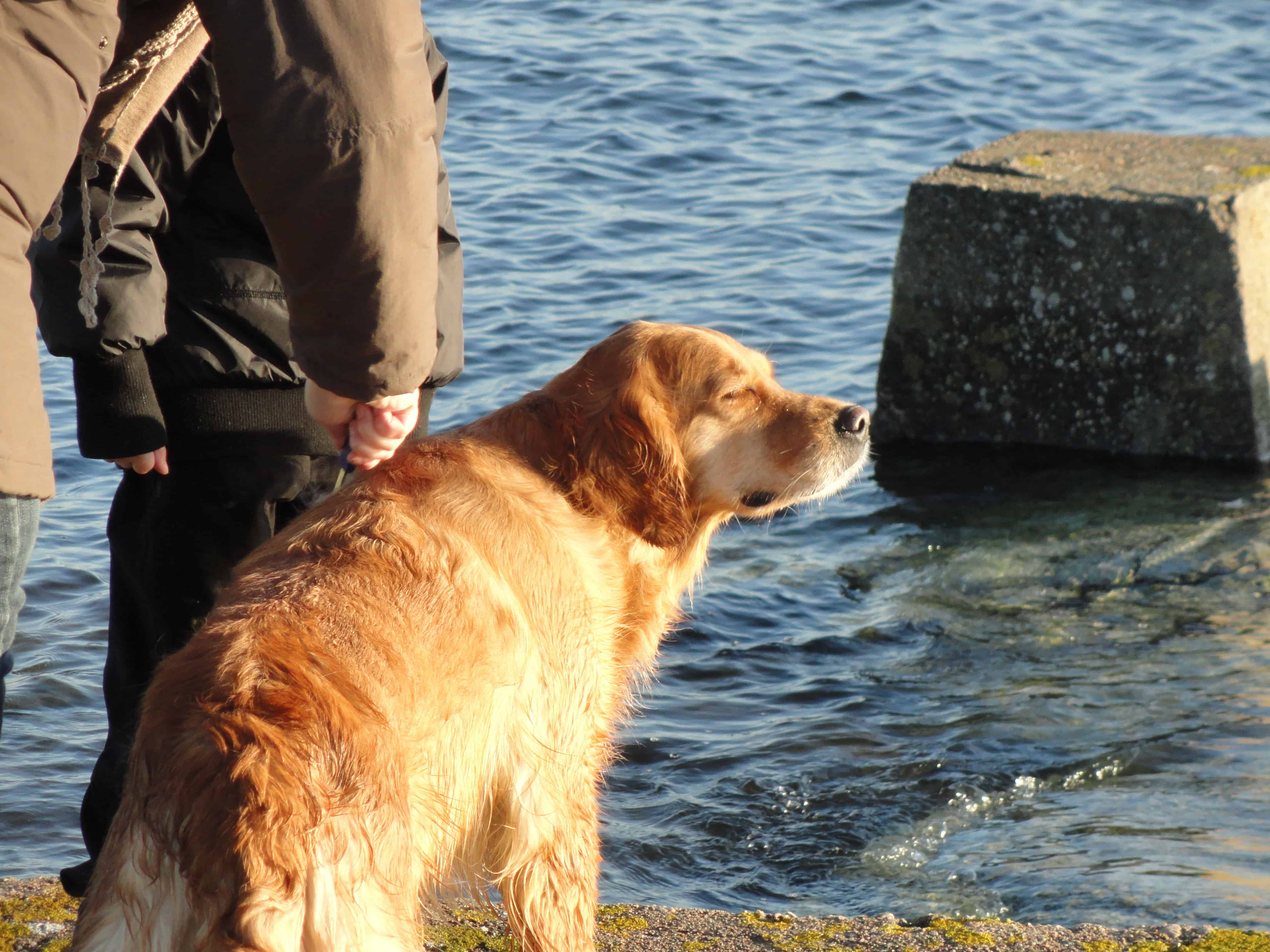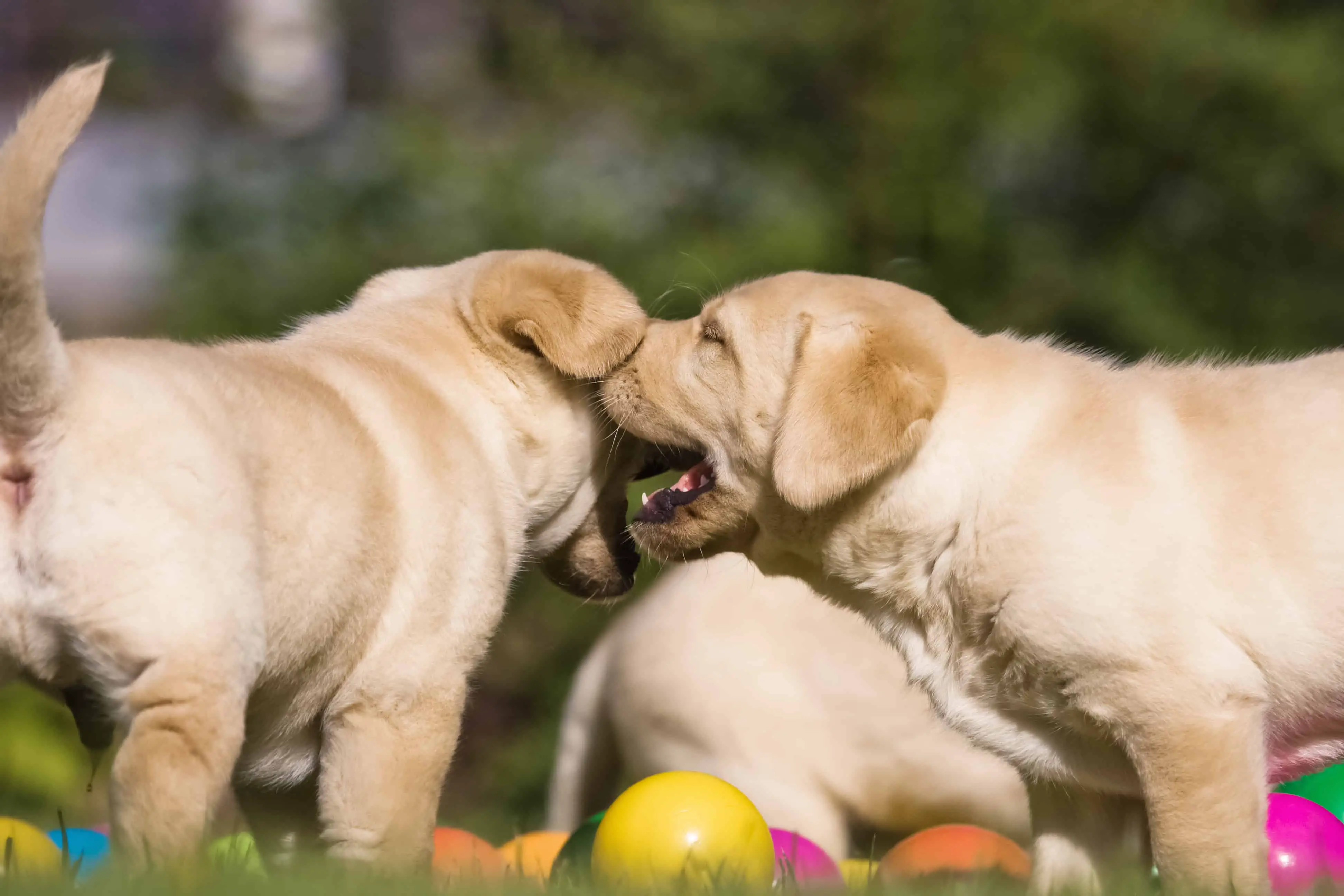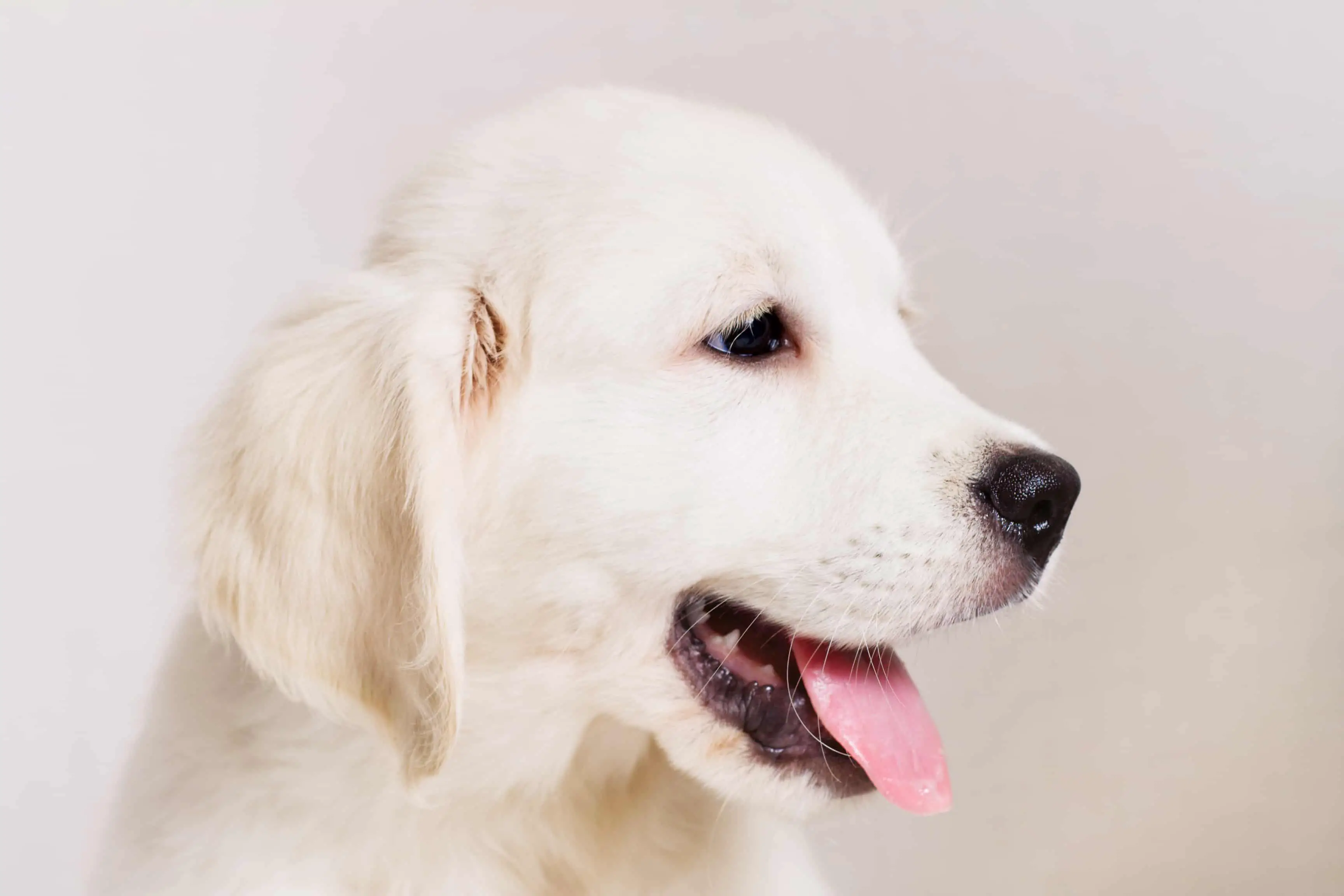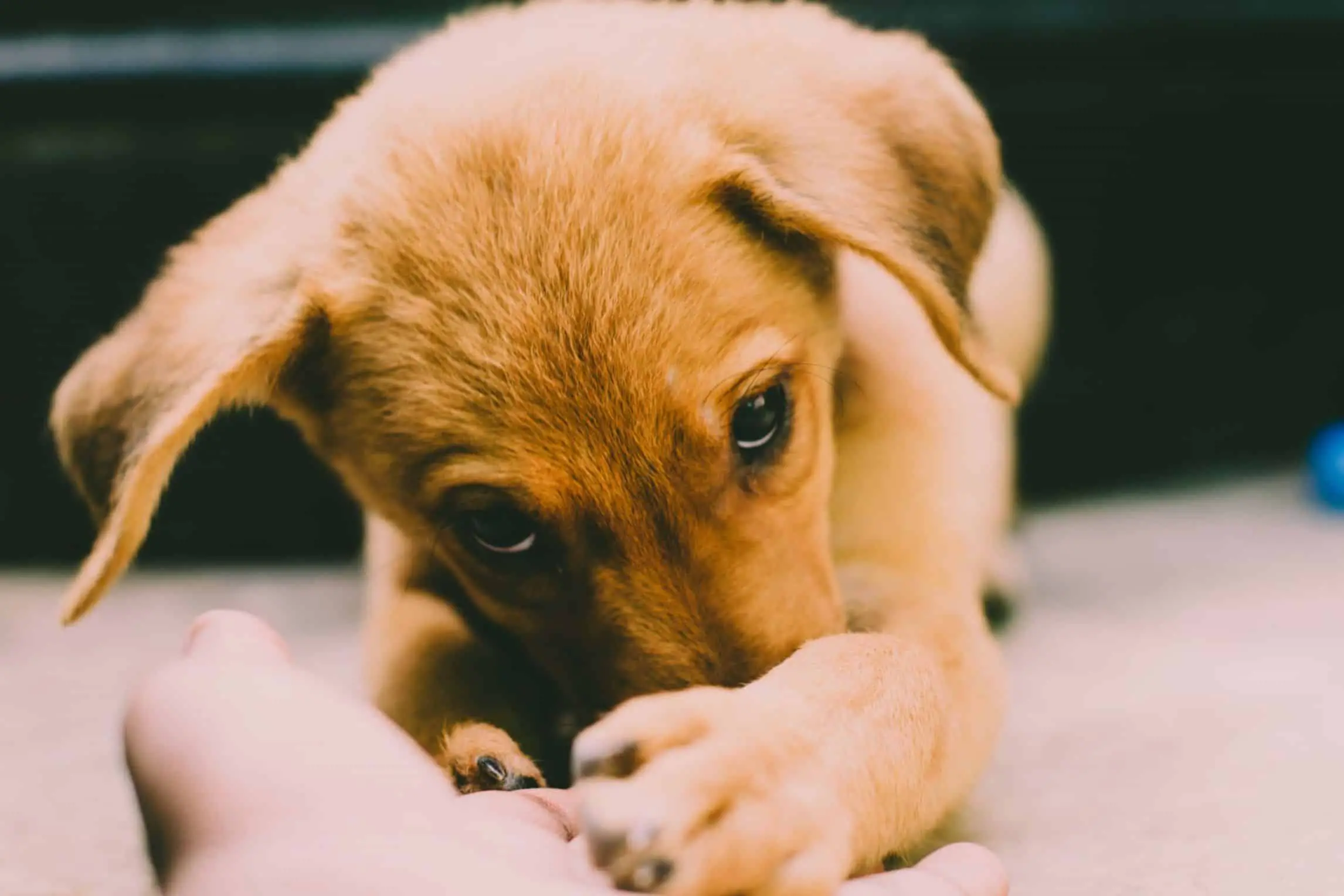I often bring our Golden Retriever Ella to the beach, and if she runs off leash she is almost always in the water in about 3 seconds. She just loves it. Because she runs around a lot, I believe her body temperature helps her to stay warm even during the coldest of days here in Sweden. However I don’t think that it’s always a good Idea to leave her wet after an activity.
Our beautiful Ella enjoys air drying in the Swedish winter sun. Camilla grasps the opportunity to groom her back.
Is it bad to leave your dog wet? I usually answer this question depending on the weather. If it’s cold I always dry our dog, since leaving her wet could make her sick. But if the weather is comfortable and you want to leave your dog wet, it’s probably fine.
After getting wet, the natural reaction of many dogs is to shake from side to side vigorously to release water from their fur. In less than four seconds of shaking, dogs can shake up to 70% of the water from their fur. Our dog Ella usually rolls around a bunch which probably also releases much of the water in her fur. But what are the risks of not drying your dog? And is this different between breeds?
Why it’s a Bad Idea
This is more common with short-haired pets. Usually air drying is not recommended because it can cause fungus growth in between the paw pads or under the armpit, and can also cause more serious problems like an ear infection. If a dog with long hair or an undercoat is left to air dry, it may cause matting of the fur and other skin problems like hot spots.
I have had several dogs with ear infections and I can assure you, it’s NO FUN.
Drying techniques
These are some common drying techniques that I have tried. There are several different ways to dry your pet, and some works better than other depending on your dog and circumstances.
Cage drying/kennel drying
Many groomers use cage or kennel drying to speed up the drying process. For this method, the pet is confined in a cage and an air blower or fan is attached to the side to direct air flow onto the pet and shorten the drying time. The dryers may have different temperature settings from no heat or cool air to moderately warm temperatures, but they should never be used on very hot settings that can distress a confined pet. The cage should be well-ventilated on all sides, including the top, to be sure there are no circulation problems that can slow drying or cause breathing problems. This method is best for smooth-coated pets with either short or medium-length fur.
We have no experience of using cage drying, so we can’t really say if they are good or not. I would generally say that it seems like a lazy solution, and just based on that I am skeptical.
Fluff drying
During fluff drying, the hair is dried but is also straightened as well during the drying process. The warm air from the dryer is directed toward the portion of the coat which is being dried and the hair is brushed with quick even strokes in an upward motion until the hair in that particular area is dry and straight. This is repeated over the entire coat until it is completely dry and can look to be standing on it’s end depending on the coat type and length.
This has a smoothing, straightening effect on the fur. This is ideal for pets with longer fur or naturally wavy coats. Great care is needed with this technique, however, and the hot air should never be directed into the pet’s face or ears.
Fluff drying is not for all dog breeds. But if you can pull it off and you have the right dog for it, it can give your dog a really professionally groomed look.
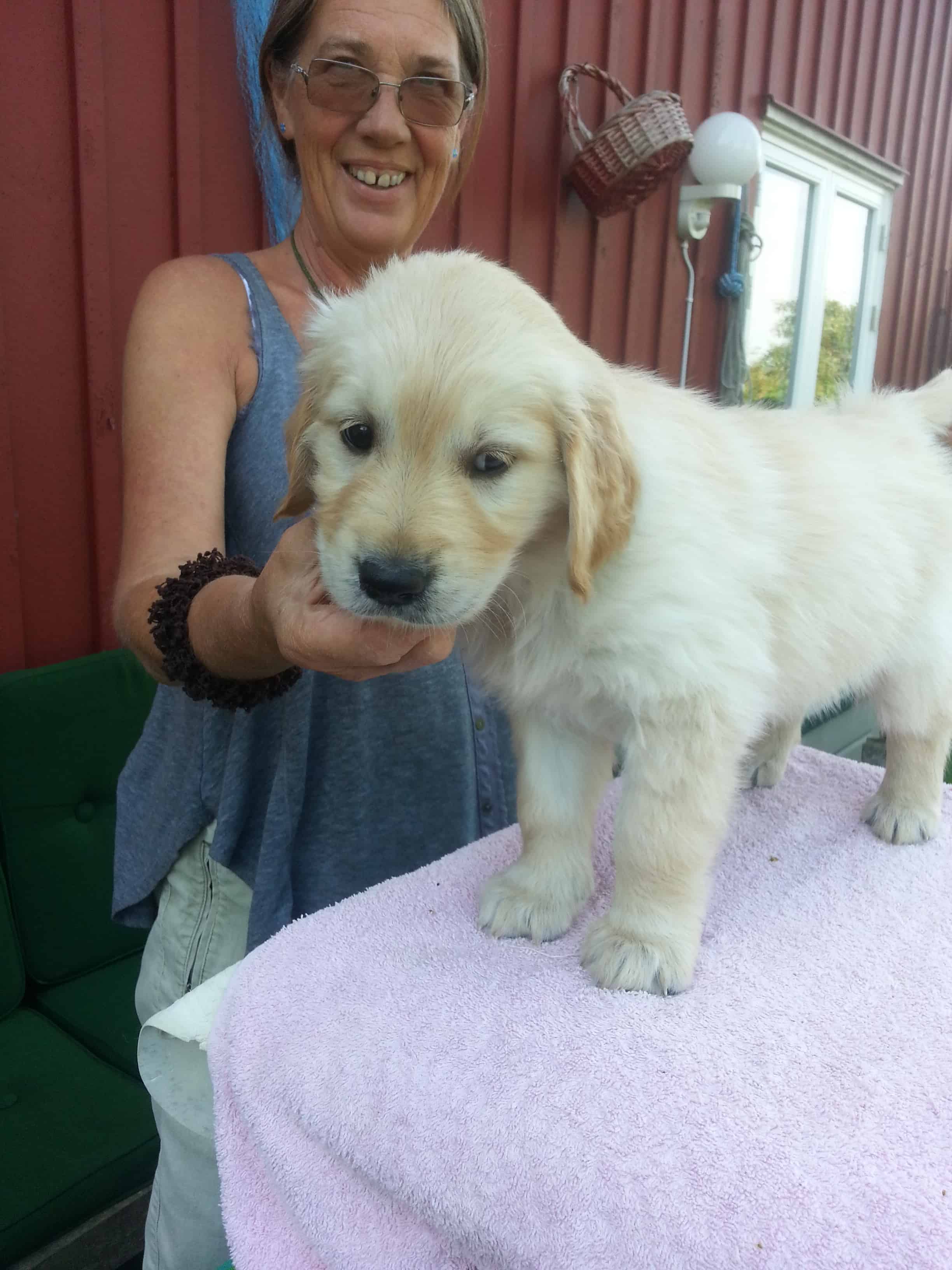
Drying and grooming this little fella is a treat
Using a hair dryer
This method usually used on medium to short-coated dogs or on dogs whose coat does not require a fluffed or straight appearance. This is the fluff drying method on a home scale and is performed in the same way as the fluff drying method with the floor or stand dryer replaced with a hair dryer. Care must be taken when using a hair dryer on your dog so you do not burn your dog’s skin with a high heat and is especially important when drying puppies.
With both methods I usually towel dry our puppies initially before using any dryer. It is important to make sure that your puppy is placed on a grooming table or another surface.
Air dry
As I said before, we let our dogs air dry some times, but I would not make a habit of doing it. This is more common with short-haired pets. If your dog has sensitive skin, an abrasion or incision that would be otherwise irritated by the rubbing of a towel or heat from the dryer, air drying may be a good fit for your pet.
As I said, we don’t recommended to always air dry your pet.
Towel dry
Another method of drying that is commonly used in drying short coat breeds. We do this all the time! Towel drying is simple and easy. I make sure the coat is rubbed briskly with the towel until it is dry. I feel like we prefer this drying technique because we prefer not to use a heat source which can burn our dogs.
I also see it as an opportunity to bond with my dogs. It’s a great time to chill out with our pups, touching them and strengthening the relationship between us.
Furthermore, it’s simple and easy and requires none of the special equipment the other methods require. However, I made a habit of not taking our dogs outside until their coat and skin are thoroughly dry and I always ensure that the ears are free of any excess moisture. (Enough experiences with infected dog ears for a lifetime)
Can a dog get sick from being wet
Your dog can get sick from being wet, when it’s cold. He is susceptible to a range of illnesses brought on by exposure to cold weather. Some of these illnesses are hypothermia, frostbite, a cold, and kennel cough.
Constant wetness does provide a breakdown in the body’s external defences though, so things like hotspots and other skin infections, fungal infections, and indeed some upper respiratory tract infections are possible.
There are never any guarantees, but just try to follow the tips I outlined in this post and you should be fine.
How to keep your dog dry in the rain
There are rain accessories that you can purchase for your pet that can sometimes help keep them dry in the rain. Although I am what many would call ”old school” and generally against ”excess equipment” I have tried these things for my dogs:
- Pet umbrellas. This is an umbrella that will attach to your dog’s collar. It makes the process of keeping your dog covered from the rain a very simple process.
- Canine rain coats. This is something else that can help to keep your dog dry in the rain. If you have a larger dog, you can also consider a small foal blanket, which is wind-resistant, waterproof and even come with Velcro straps to help keep the blanket in place. These can definitely be useful!
- Canine rain boots. Though not many dogs will put up with this (ours didn’t), you can always try it. This will help to keep your dog’s legs and paws from getting wet.
Why dogs get hyper in cold weather
The dizzying act is actually something that animal experts refer to as the “zoomies,” or, more technically, “Frenetic Random Activity Periods( FRAPs). FRAPs are a totally normal release of pent up energy.
Dogs get as excited about snow as our kids do! My dogs with heavy coats certainly love winter. I’m not quite sure what the attraction is, but it’s definitely there.
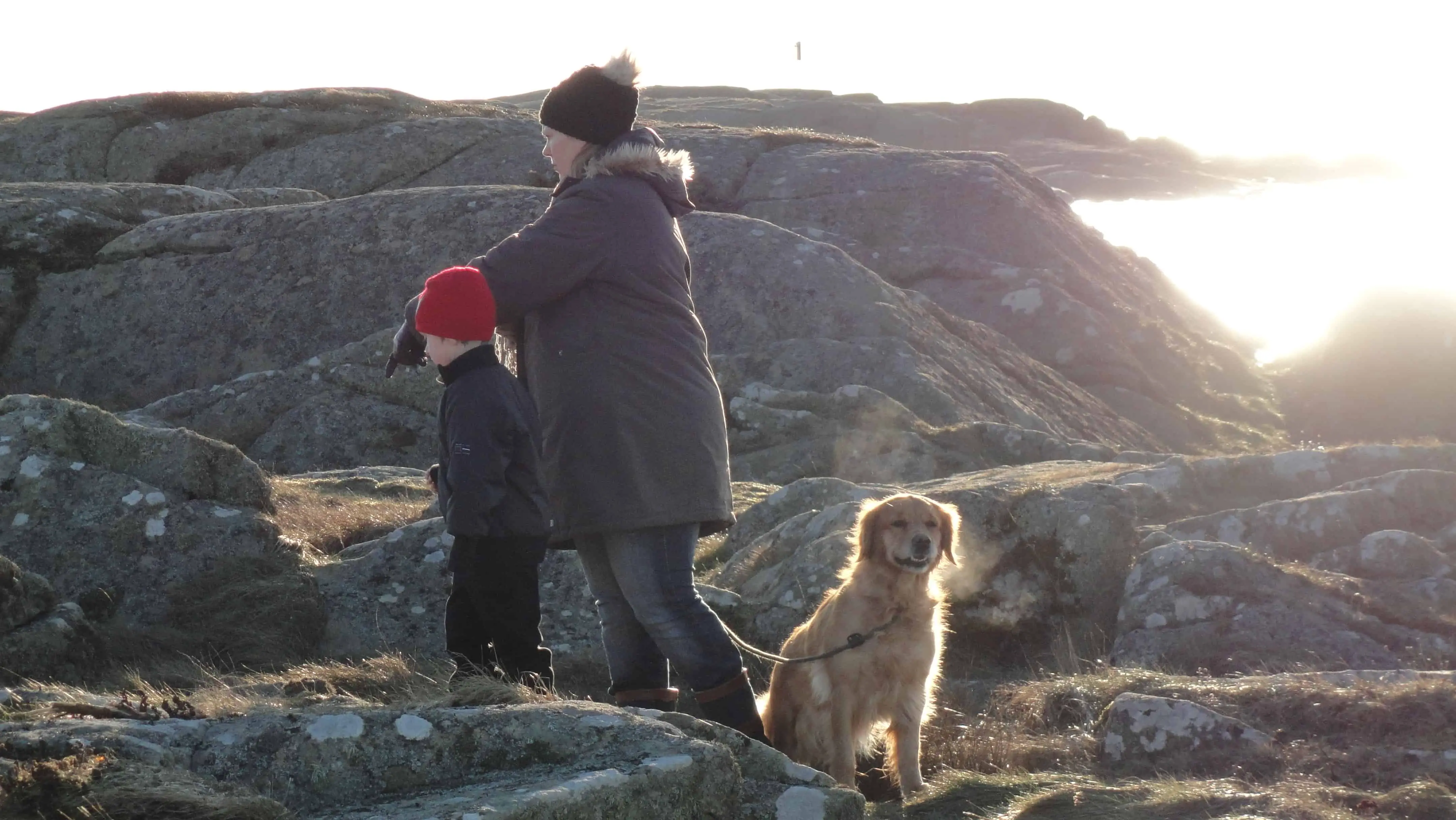
Ella is usually very easy, but can definitely get ”hyper mode” going when we are out by the sea
Can I give my dog a bath in winter
Of course you can! Grooming duties don’t take a vacation during the winter (Amen to that). The biggest concern with bathing your dog in the winter is the possibility of hypothermia, and the warmer it is in your house, the less likely your dog is to get chilled.
I use warm water and keep Ella in the house until she is completely dry. Even a few minutes in cold winter weather is enough to give your dog the chills, so keep her inside for a few hours to ensure she is dry from head to toe.
If you are too scared to give your dog a bath in winter, here are several ways to clean up your dog without even using water:
Waterless shampoo
I have used this several times. Waterless shampoo can help lift out oils and dirt without the need for a rinse. Waterless shampoo is liquid; it sprays onto your dog’s coat. You’ll work the shampoo (often a foam) down into the fur either with your hands or by brushing. Towel your dog; after the waterless shampoo dries, brush again.
Dry shampoo
Dry dog shampoo sprinkles on to lift out dander, dirt, and oil. Sprinkle on, work the dry shampoo into your dog’s coat, and finally brush out the powder and accompanying dirt!
Conditioning sprays
I use the leave-in conditioning sprays to freshen your dog’s coat between baths. Like the name suggests, you spray the conditioner on your dog’s fur then leave it in to both condition the fur and skin (especially important during this cold weather) and to leave your dog smelling wonderful.
Is it bad to walk dog in rain?
It’s completely fine to walk your dog in the rain, assuming your dog wants to walk in the rain. One of the easiest ways to make walking your dog in the rain as painless as possible is to try to look out for areas that block the rain. If you can find an area that is covered or that has trees to block out some of the rain, then this can help immensely, as it will limit the amount of rain that your dog is exposed to.
How to exercise your dog when it’s raining
There are some fun indoor exercises I do with our dogs when it’s raining. Here’s a list that you can use as guideline:
- Keep away and fetch. Engage your dog in a good old fashioned game of fetch and keep away. These games keep your dog engaged, active, and help to release pent up energy.
- Hide & Seek. Playing a game of hide and seek with your dog is a fun way to keep them active on rainy days
- Find the treat. Take a variety of your dog’s favorite treats and hide the around the house – behind doors, under tables, underneath rugs, etc. Your dog will be so busy tracking down his treats that he’ll physically tire out in the process.
- Get your dog on the treadmill. A treadmill is a great way to get your dog a dose of healthy indoor exercise. First, allow your dog to get comfortable with the sight and sound of a running treadmill. Next, place your dog on the treadmill and give him a treat. Turn the treadmill on the lowest speed. Give him treats to keep him on the treadmill.
Conclusion
Don’t be afraid to get wet! Well get your dog wet anyway. Bathing or swimming is great for your dog, (not to mention the smell of your house) and can be done all year around. I like to use towels when drying our dogs, since they give a really great opportunity to bond with our dogs. Whatever solution you use, make sure to be careful with the nose and ears of your dog, you don’t want to cause no infections!
Air drying is ok to some extent. Try to avoid it and groom your dog instead, since infections and such are a risk. Most importantly, let your dog have fun! Running by the sea and drying up by running around on the rocks is one of the favorite activities of our dogs. Let your learn to love the wet life, and don’t get hung up by paranoia!
Related Articles
The Best Flea and Tick Prevention For Our Golden Retriever Puppies
Could you imagine having fleas suddenly jumping out of your sofa while you are sitting in it, relaxing and watching the latest episode of Game of Thrones? Fleas and ticks are disgusting and you need to prevent them or otherwise get rid of them QUICKLY. We have found...
5 Unknown Puppy Hacks That Changed How We Do Dog Breeding
We are confident that some of these tricks can only be learned through sheer luck or by experience. Here we share…
The Best Teething Ring For Chewing Golden Retriever Puppies
Collectively, our puppies have historically more or less chewed through an entire city block by the time we write this…
Stay Up to Date With The Latest News & Updates
Join Our Newsletter
The owner of this site is a participant in the Amazon Services LLC Associates Program, an affiliate advertising program designed to provide a means for sites to earn advertising fees by advertising and linking to amazon.com.
